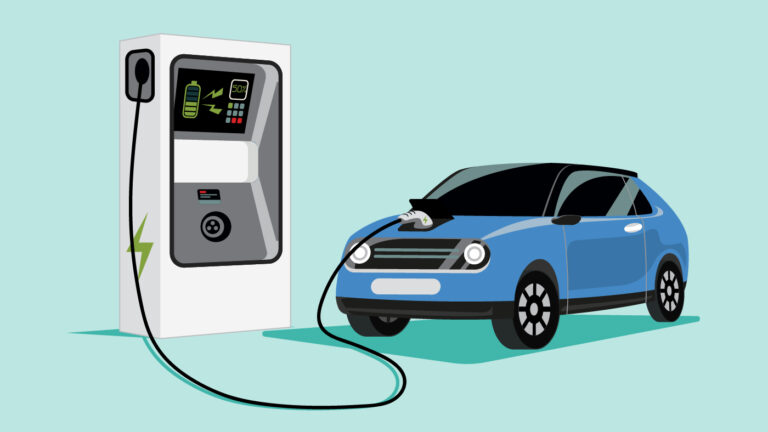Introduction
Electric Vehicles (EVs) are transforming the way we think about transportation, offering an environmentally friendly alternative to conventional gasoline-powered cars. With advancements in technology, EVs are becoming more accessible and practical. This article explores the working principles behind electric vehicles and the infrastructure required for charging them efficiently.
How Electric Vehicles Work
1. Core Components of an Electric Vehicle
EVs function using several key components that differ from traditional internal combustion engines (ICEs):
- Electric Motor: Converts electrical energy into mechanical energy to drive the vehicle.
- Battery Pack: Stores electrical energy used by the motor. Lithium-ion batteries are the most common.
- Controller: Manages the power flow between the battery and motor to control speed and torque.
- Regenerative Braking System: Recovers energy during braking and stores it back into the battery.
- Onboard Charger: Converts AC electricity from the charging station to DC power, which charges the battery.
Working Principle of Electric Vehicles
The operation of an EV can be broken down into the following steps:
- Power Supply from the Battery: The battery delivers DC electricity to the controller.
- Controller Regulates the Power: Depending on the acceleration, the controller sends a precise amount of power to the electric motor.
- Electric Motor Propels the Vehicle: The motor uses the electrical energy to generate mechanical force, which drives the wheels.
- Regenerative Braking Activates: When the driver applies the brakes, the motor reverses its function, acting as a generator and converting the vehicle’s kinetic energy back into stored energy for the battery.
Types of Electric Vehicles
- Battery Electric Vehicles (BEVs):
Fully electric vehicles that rely only on batteries (e.g., Tesla Model 3, Nissan Leaf). - Plug-in Hybrid Electric Vehicles (PHEVs):
Vehicles with both an electric motor and an internal combustion engine (e.g., Chevrolet Volt). - Hybrid Electric Vehicles (HEVs):
Vehicles that combine a smaller battery with an internal combustion engine, but without plug-in capability (e.g., Toyota Prius).
Charging Infrastructure for Electric Vehicles
The rise in EV adoption is heavily dependent on the availability of reliable and efficient charging infrastructure. Charging an EV involves transferring electricity from the grid to the vehicle’s battery.
1. Types of Charging Stations
- Level 1 Charging:
- Power: 120V AC (standard household outlet)
- Time: 8-12 hours for a full charge
- Usage: Ideal for overnight home charging.
- Level 2 Charging:
- Power: 240V AC
- Time: 4-6 hours for a full charge
- Usage: Commonly installed at homes, workplaces, and public places.
- DC Fast Charging (Level 3):
- Power: 400V-800V DC
- Time: 30-60 minutes for 80% charge
- Usage: Found at highway stations and service centers for rapid charging.
2. Wireless Charging for EVs
Some companies are working on wireless charging pads, allowing EVs to charge without cables. The vehicle needs to be parked over a pad, and power is transferred via electromagnetic induction.
Challenges in EV Charging Infrastructure
- Limited Availability of Charging Stations: Although growing, charging stations are still sparse in rural areas and some urban regions.
- Charging Speed vs Battery Life: Fast charging can degrade batteries faster, posing a challenge for battery longevity.
- Grid Load Management: The increasing number of EVs puts a strain on power grids, especially during peak charging hours.
- Interoperability: Different EV manufacturers may use different charging connectors, causing compatibility issues.
Future of EV Charging Infrastructure
The future of EV charging is promising, with new developments aimed at making the process more efficient and widespread:
- Ultra-Fast Chargers: Chargers that can top up batteries in less than 10 minutes.
- Vehicle-to-Grid (V2G) Technology: EVs can act as mobile energy sources, supplying electricity back to the grid during peak demand.
- Public-Private Partnerships: Governments and private companies are investing heavily in expanding charging networks worldwide.
- Solar-Powered Charging Stations: Integrating solar energy with charging infrastructure to provide sustainable power for EVs.
Conclusion
Electric vehicles offer a glimpse into a cleaner, more sustainable future. Their working principle revolves around the efficient use of electricity and the recovery of energy during braking. However, the widespread adoption of EVs depends on the availability and reliability of charging infrastructure. As technology advances, we can expect to see improvements in battery technology, faster chargers, and smarter grids, making EVs a practical solution for everyday transportation.


